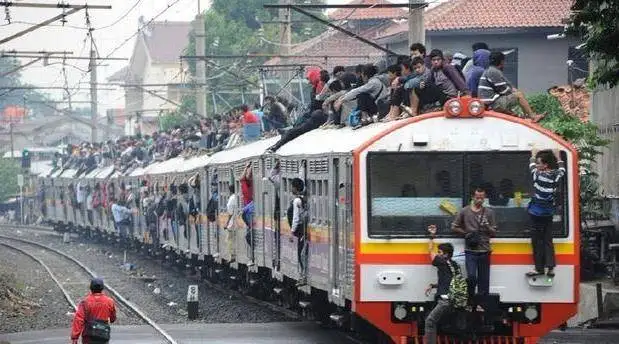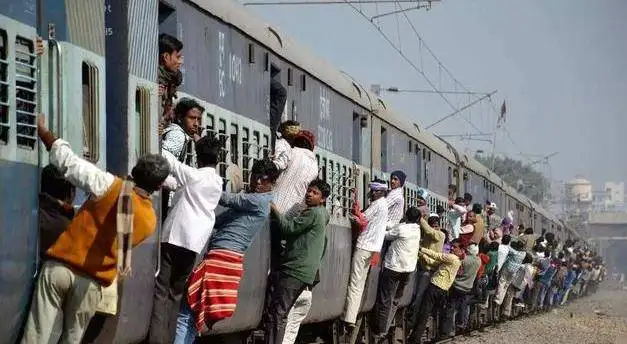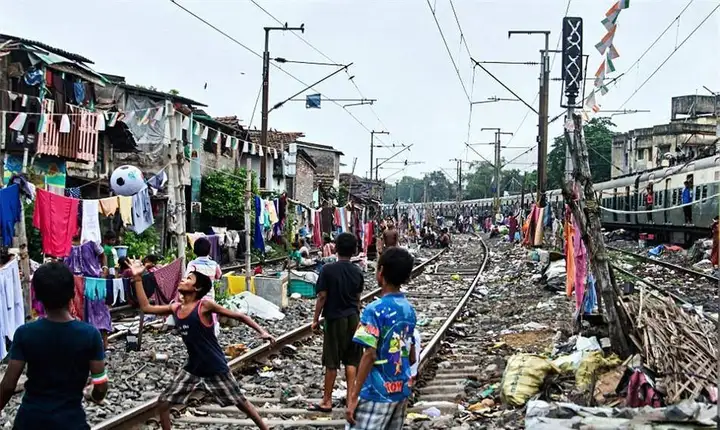Three trains collided in a row, killing more than 200 people.
The occurrence of such a probability of accident is required to a certain level, not infrastructure to a certain extent, the traffic command and control to a certain extent, with the Indian train tens of kilometers of turtle speed, is not to crash this effect.
This kind of thing happens in India can not set off half a ripple, Indians do not care too much, because these things they are used to see, last year India collapsed a suspension bridge, also died a few hundred people.
You take "wait a minute your people" to play stunt, in fact, is the misunderstanding of the Indian speed, people are not fast, the average speed of Indian trains reached 46 km per hour in 2020, the Indian people rejoiced, the media issued an article celebrating "faster than a mule".

Indian trains can not be fast, because they are very "humane", to facilitate passengers to get on and off the train at any time, anywhere, if you have observed the way Indians get on and off the train, you will marvel at the magic of creation, they are evolved mutants, do not need to stop to climb on the train at any time, can also get off at any time while driving ......

India does not have a real sense of high speed rail, the fastest train "Wander Bharat Express" has been running at an average speed of 83 km per hour. None of the three trains in the collision was an "express", it was just an ordinary slow train.
As early as 1892, India already had 30,000 kilometers of railway lines, and in 1908, India had an electrified railroad, the Bombay Tram, and in 1920, the total length of Indian railroads was over 60,000 kilometers, five times that of China, and in 1947, when India became independent, it had the largest railroad network in Asia.
Yet to this day, India's railroads have not increased much over what they were 70 years ago - 50,000 km in 1947 to a total of 70,000 km today.

Even because India is only formally unified, the regions are not even unified rail standards ...... For example, the current Indian railroads, the emergence of 61 cm, 76.2 cm, 100 cm, 143.5 cm, 167 cm and other five different widths of the railroad (Yan Xishan straight call insiders).
Unlike most countries in the world that use the standard gauge with a width of 1435 mm, Indian railroads still have a variety of gauges co-existing, with wide gauge (1676 mm) accounting for about 80%, meter gauge (1000 mm) nearly 20%, and a small number of narrow gauge (762/610 mm). After 70 years of independence, the gauge of Indian railroads are not unified, which not only increases the difficulty of management, but also reduces the efficiency of Indian railroad operation. In India, except for a small number of running speed above 100 km/h, most of the trains run at about 60 to 80 km/h, some even only about 40 km/h.
Such a slow railroad is actually also very dangerous, most of the Indian railroads lack the necessary protective measures, resulting in the masses around the world or livestock, randomly across the railroad ...... not an accident is an accident.
The main reason why India cannot build railroads on a large scale is the difficulty of land acquisition. In the process of building various railroads in India, many Indian landowners and farmers, are opposed to passing through their own farmland, which directly affects the speed of railroad construction. India's railroads are controlled by various states, multinational companies, state-owned enterprises, and cities, and are not unified with each other, so it is impossible to concentrate on doing big things.
Some people ask, "Why can't India unify the standards, break and build? You have to understand, India is not a capitalist road or socialist road, India is not yet completed the "feudalist revolution", failed to "the same book, the same track", it is not even India's Qin Shi Huang brush out yet.
The main reason is the difficulty of land acquisition. In the process of building various railroads in India, many Indian landowners and farmers, are opposed to passing through their own farmland, directly affecting the speed of railroad construction.




